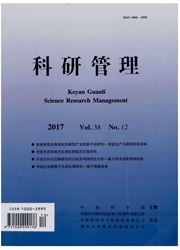

 中文摘要:
中文摘要:
从环境规制工具对节能减排效率影响这一基本问题出发,基于非期望产出的SBM-DDF模型测算出30个省2001-2012年节能减排效率,并分析其动态变化特征,以此为基础利用系统GMM考察环境规制工具差异引致的节能减排异质效应。实证结果表明,命令控制型和公众参与型环境规制对节能减排效率的影响呈现倒U型结构;而市场激励型表现类似于正U型结构,证实了波特关于合理环境规制强度的假说。本文进一步分阶段检验环境规制工具节能减排效果的差异,命令控制型环境规制在第一阶段发挥主要作用,而在第二阶段却成为阻碍节能减排效率提升的因素;市场激励型和公众参与型环境规制并未在第一阶段表现出促进节能减排效率的效果,但其作用在第二阶段开始呈现,并成为这一阶段节能减排效率改善的关键因素,从而区分环境规制工具在不同时期的适用性。
 英文摘要:
英文摘要:
Starting from the basic issue of the environmental regulation tools' impact on the efficiency of energy conservation and emission reduction,and based on the efficiency of energy conservation and emission reduction of 30 Chinese provinces during2001- 2012 calculated by the undesirable output of SBM- DDF model and consequent analysis of its dynamic changes,this paper focuses on the heterogeneity of energy conservation and emission reduction due to different environmental regulations tools using System GMM method. The empirical results show that the command- and- control and the public- engaged environmental regulations have an inverted " U"- shaped impact on the efficiency of energy conservation and emission reduction,while market incentive environmental regulation has a "U"- shaped impact,it confirms the Porter Hypothesis which imply the reasonable environmental regulation intensity. This paper further examines in phases the differentiation of environmental regulation tools' effect on energy conservation and emission reduction: the command- and- control environmental regulation plays a major role in the first phase,whereas in the second phase,it becomes a factor to hinder the increase in efficiency of energy conservation and emission reduction; the market incentive and the public- engaged environmental regulations show no function on promoting energy conservation and emission reduction in the first phase,while in the second phase,these two kinds of regulation begin to play their role and become the key factors in improvement of efficiency of the energy conservation and emission reduction,therefore the applicability of the environmental regulation tools in different phases is differentiated.
 同期刊论文项目
同期刊论文项目
 同项目期刊论文
同项目期刊论文
 期刊信息
期刊信息
